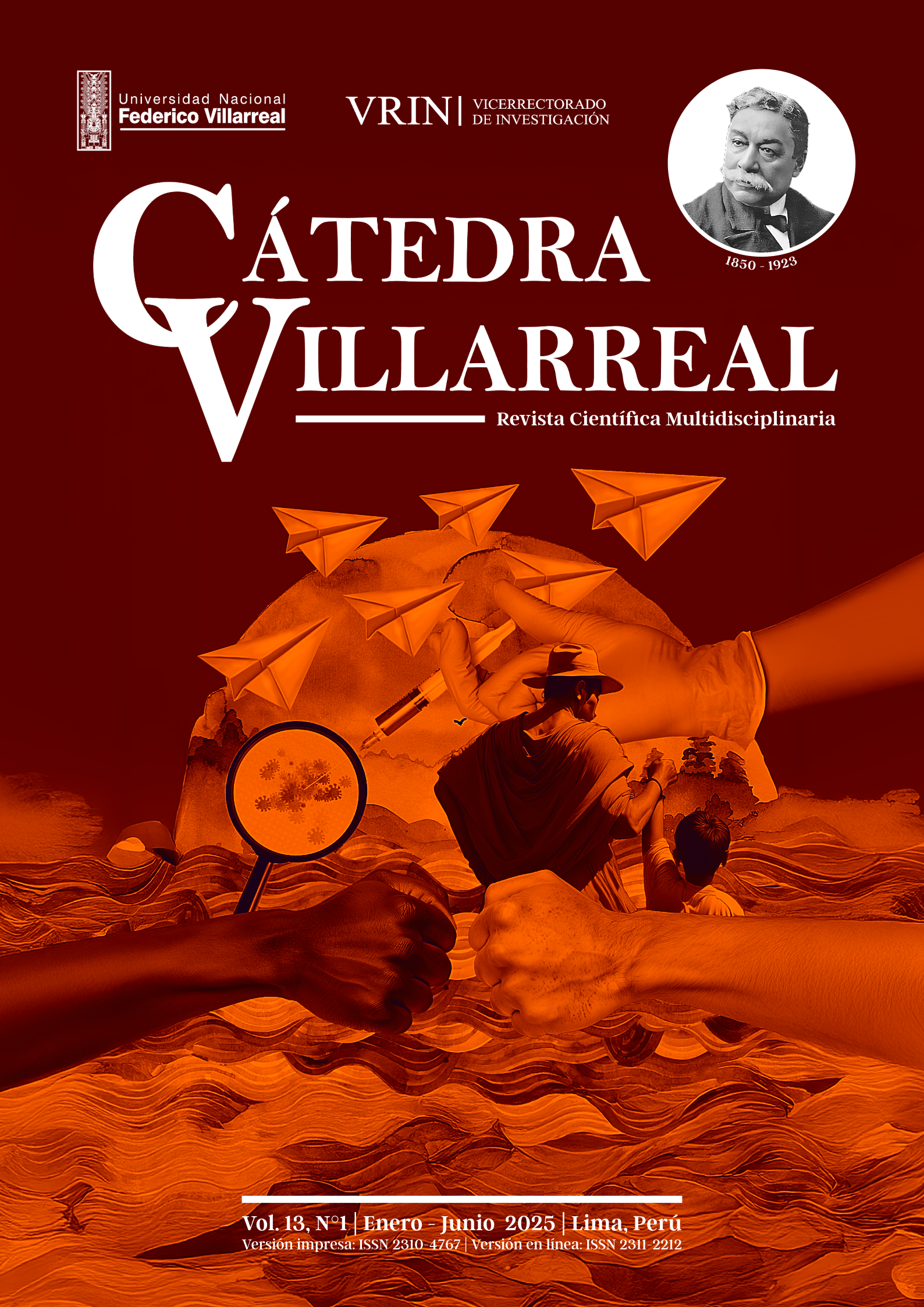Impacto de inversiones de alto riesgo para el mantenimiento del coeficiente de competitividad empresarial en la recuperación económica
DOI:
https://doi.org/10.24039/rcv20251311888Palabras clave:
competitividad, estrategia empresarial, inversión, recuperación económica, riesgoResumen
El objetivo del estudio fue determinar el impacto de inversiones de alto riesgo mediante el coeficiente de competitividad empresarial 3CA en la recuperación económica. Con un enfoque cuantitativo y descriptivo, se utilizaron encuestas validadas (α de Cronbach) y softwares 3CA y CAPROR para analizar competitividad y recuperación económica, además de una fórmula sobre el Índice de predicción de Riesgo y Quieta. Los resultados mostraron una confiabilidad alfa de Cronbach de 0,71, lo que garantizó la consistencia interna. AMTAWI mostró un coeficiente de competitividad de 1,2 en 2023 y proyectó 1,4 para 2024; ACINOX pasó de 1,4 a 1,6, logrando niveles de excelencia, mientras que Imprenta Campos mantuvo un coeficiente de 0,9. El Índice de Riesgo indicó bajo riesgo para AMTAWI (0,012), medio para Imprenta Campos (0,014) y alto para ACINOX (0,021). Las inversiones representaron el 65% de la rentabilidad en AMTAWI, 91% en ACINOX y 33% en Imprenta Campos, con recuperaciones económicas de 47%, 3% y 26%, respectivamente. Las estrategias de inversión y adaptación demostraron ser clave para la estabilidad y recuperación económica. AMTAWI y ACINOX avanzaron hacia la excelencia, mientras que Imprenta Campos se mantuvo estable, destacando la importancia de equilibrar riesgos y mantener la prudencia. Se concluye que la competitividad y el riesgo empresarial son dinámicos, influenciados por factores internos y externos, siendo la adaptabilidad empresarial esencial ante las incertidumbres.
Descargas
Citas
Abba, Z., Balta, N., & Hart, P. (2022). A holistic risk management framework for renewable energy investments. Renewable and Sustainable Energy Reviews, 160, 112305. https://doi.org/10.1016/j.rser.2022.112305
Adomako, S., Abdelgawad, S., Ahsan, M., Amankwah, J., & Liedong, T. (2023). Nonmarket strategy in emerging markets: The link between SMEs’ corporate political activity, corporate social responsibility, and firm competitiveness. Journal of Business Research, 160, 113767. https://doi.org/10.1016/j.jbusres.2023.113767
Barton, D. (2022). Recognising institutional context in simulating and generalising exchange values for monetary ecosystem accounts. One Ecosystem, 7, e85283. https://doi.org/10.3897/oneeco.7.e85283
Cha, J., Park, K., Kim, H., & Hong, J. (2023). Crisis index prediction based on momentum theory and earnings downside risk theory: Focusing on South Korea’s energy industry. Energies, 16(5), 2153. https://doi.org/10.3390/en16052153
Chen, D., Ye, J., & Ye, W. (2023). Interpretable selective learning in credit risk. Research in International Business and Finance, 65, 101940. https://doi.org/10.1016/j.ribaf.2023.101940
Corvello, V., Felicetti, A., Troise, C., & et al. (2024). Betting on the future: how to build antifragility in innovative start-up companies. Review of Managerial Science, 18, 1101-1127. https://doi.org/10.1007/s11846-023-00636-x
Donohue, I., Coscieme, L., Gellner, G., Yang, Q., Jackson, A., Kubiszewski, I., Costanza, R., & McCann, K. (2023). Accelerated economic recovery in countries powered by renewables. Ecological Economics, 212, 107916. https://doi.org/10.1016/j.ecolecon.2023.107916
Franz, D., & Le, J. (2021). Technology advances, high-risk research, and a safe way forward. mBio, 12(5):e0237321. https://doi.org/10.1128/mbio.02373-21
Gómez, R., Alvarez, A., Cuya, B., Arias, M., Campos, N., Juarez, L., Anderson, M., Aguila, S., & Yáñez, J. (2023). Product innovation, market intelligence and pricing capability as a competitive advantage in the international performance of startups: Case of Peru. Sustainability, 15(11), 8992. https://doi.org/10.3390/su15118992
Heredia, J., Geldes, C., Kunc, M., & Flores, A. (2019). New approach to the innovation process in emerging economies: The manufacturing sector case in Chile and Peru. Technovation, 79, 35-55. https://doi.org/10.1016/j.technovation.2018.02.012
Hristov, I., Camilli, R., Chirico, A., & Mechelli, A. (2022). The integration between enterprise risk management and performance management system: Managerial analysis and conceptual model to support strategic decision-making process. Production Planning & Control, 35(8), 842-855. https://doi.org/10.1080/09537287.2022.2140086
Hsu, C., Chang, A., Zhang, T., Lin, W., & Liu, W. (2021). Deploying resilience enablers to mitigate risks in sustainable fashion supply chains. Sustainability, 13(5), 2943. https://doi.org/10.3390/su13052943
Huang, C., Baghersad, M., Behara, R., & Zobel, C. (2022). Optimal investment in prevention and recovery for mitigating epidemic risks. Risk Analysis, 42(1), 206-220.
James, N., Menzies, M., & Chin, K. (2022). Economic state classification and portfolio optimisation with application to stagflationary environments. Chaos, Solitons & Fractals, 164, 112664. https://doi.org/10.1016/j.chaos.2022.112664
Kang, X., Wang, M., Lin, J., & et al. (2022). Trends and status in resources security, ecological stability, and sustainable development research: A systematic analysis. Environmental Science and Pollution Research, 29, 50192-50207. https://doi.org/10.1007/s11356-022-19412-7
Le, S., & Sukhatme, N. (2020). Reaching for mediocrity: Competition and stagnation in pharmaceutical innovation. International Review of Law and Economics, 64, 105934. https://doi.org/10.1016/j.irle.2020.105934
López, V., Iglesias, S., & Fernández, E. (2020). Is sustainable performance explained by firm effect in small business? Sustainability, 12(23), 10028. https://doi.org/10.3390/su122310028
Noja, G., Buglea, A., Lala, I., & et al. (2021). The interplay between knowledge-based competitiveness, people’s good health and well-being: New empirical evidence from Central and Eastern European countries. Quality & Quantity, 55, 441-466. https://doi.org/10.1007/s11135-020-01015-4
Nupehewa, S., Liyanage, S., Polkotuwa, D., Thiyagarajah, M., Jayathilaka, R., & Lokeshwara, A. (2022). More than just investment: Causality analysis between foreign direct investment and economic growth. PLoS ONE, 17(11), e0276621. https://doi.org/10.1371/journal.pone.0276621
Prokopczuk, M., Stancu, A., & Symeonidis, L. (2019). The economic drivers of commodity market volatility. Journal of International Money and Finance, 98, 102063. https://doi.org/10.1016/j.jimonfin.2019.102063
Settembre, D., González, R., & Medina, S. (2021). Flexibility and resilience in corporate decision making: A new sustainability-based risk management system in uncertain times. Global Journal of Flexible Systems Management, 22(Suppl 2), 107–132. https://doi.org/10.1007/s40171-021-00277-7
Tiganasu, R., Pascariu, G., & Lupu, D. (2022). Competitiveness, fiscal policy and corruption: Evidence from central and eastern european countries. Oeconomia Copernicana, 13(3), 667-698. https://doi.org/10.24136/oc.2022.020
Yin, H., Mohsin, M., Zhang, L., Qian, C., & Cai, Y. (2022). Accessing the impact of FDI goals on risk management strategy and management performance in the digital era: A case study of SMEs in China. Sustainability, 14(22), 14874. https://doi.org/10.3390/su142214874
Zenghelis, D. (2021). Why sustainable, inclusive, and resilient investment makes for efficacious post-COVID medicine. WIREs Climate Change, 12, e708. https://doi.org/10.1002/wcc.708
Publicado
Cómo citar
Número
Sección
Licencia
Derechos de autor 2025 Yadira Argota Pérez

Esta obra está bajo una licencia internacional Creative Commons Atribución 4.0.
Todos los documentos se publican bajo Licencia de Creative Commons Reconocimiento 4.0 Internacional.

Los autores conservan los derechos de autor y ceden a la revista el derecho de primera publicación, con el trabajo registrado con la Licencia de Creative Commons, que permite a terceros utilizar lo publicado siempre que mencionen la autoría del trabajo, y a la primera publicación en esta revista.



















